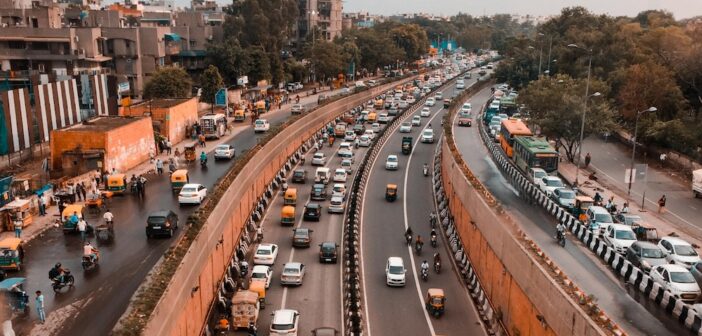The Ministry of Statistics and Programme Implementation recently published a report titled Energy Statistics India 2025 covering trends in the energy supply, demand, and consumption, including the energy balance scenario, among others. Data from the report notes that 70% of the energy consumption in the transport sector is in road transport.
India’s aim of achieving a “Viksit Bharat” by 2047 is very much dependent on the dynamics of energy production, supply, and consumption. As one of the fastest-growing major economies in the world, India’s development aspirations are reflected in its expanding infrastructure, industrialization, urbanization, and rising standards of living. These trends have led to a sharp increase in energy demand, making the country the third-largest energy consumer globally.
As consumerism grows with an expanding middle class, energy-intensive lifestyles are becoming more common, significantly increasing pressure on energy supply. Be it cooking, running a vehicle, or even charging electronics, energy lies at the heart of every developmental milestone, which is fully dependent on energy sources such as Coal, Natural Gas, and Petroleum, among others.
Thus, strategically managing energy supply and consumption becomes crucial in India’s progress towards its targeted goal of becoming a developed nation. The periodic assessment of trends in supply, demand, and consumption is important to track and plan accordingly.
In an attempt to address these concerns, the Ministry of Statistics and Programme Implementation (MoSPI) recently published a report titled Energy Statistics India 2025 covering trends in the energy supply, demand, and consumption, among others.
In this story, we look at the energy balance scenario of India, examining the trends in the energy supply and consumption.
The data for the story is sourced from Dataful’s collection of datasets on Energy statistics, curated from the MoSPI report on energy statistics.
Definition and importance of Energy Balance
MoSPI report states that India is currently the world’s third-largest consumer of oil, and LPG, fourth largest LNG importer, refiner, and fourth largest automobile market.
Taking note of the energy necessity of India for its development aspirations, the MoSPI report defines and lays down the importance of assessing Energy Balance (EB) as “an essential tool for monitoring energy supply, consumption, and efficiency within a country. It is formulated as a matrix of products and flows, where all energy data is expressed in unified units, typically kilo-tonnes of oil equivalent (ktoe), to allow for consistent comparison and analysis. The key components of an energy balance are the Total Primary Energy Supply (TPES) and Total Final Consumption (TFC) of energy commodities. TPES reflects the total energy available within the country, while TFC breaks down the energy usage by various sectors like industry, transport, residential, and services”
MoSPI report further states that such an analysis of EB helps in providing an overview of the country’s energy profile and monitoring energy security and policy goals. These serve as the foundation for socio-economic indicators, including CO2 emissions, and others.
Between 2012-13 & 2021-22, India’s energy supply exceeded consumption each year
The MoSPI report examined the trends in the primary energy supply through sources such as Coal, Crude Oil, Natural Gas, Oil Products, and others, together with the consumption trends.
As per the data, the Total Primary Energy Supply (TPES) from all the sources in 2012-13 was 5,93,602 kilo-tonnes of oil equivalent (Ktoe). This has risen by 31% to 7,78,309 Ktoe by 2021-22. The Total Final Energy Consumption (TFEC) in 2012-13 was 3,95,782 Ktoe, showing a difference of 1,97,821 Ktoe, which is 33% lower than the supply. In 2021-22, it was 5,15,623, which is 34% lower than the TPES for the same year. Similar patterns were observed each year between 2012-13 & 2021-22, where the TPES was about 30% higher than the TPEC.
When compared by year-on-year (y-o-y) growth, TPES had the highest growth rate in 2021-22 at 10%, and TFEC had the highest growth rate of 7% in 2014-15. Between 2012-13 & 221-22, both TPES and TFEC had grown at an average of 3% each year.
Between 2013-14 & 2023-24, the per capita TPES and TFEC increased by 38% and 33%, respectively
The increase in TPES and TFEC each year is also reflected in their per capita increase. As per the report, the per capita TPES in 2014-15 was 21,216 Mega Joules, which rose by 28% to 27,097 Mega Joules by 2023-24. Further, the per capita TFEC in 2014-15 was 14,862 Mega Joules, which increased by 24% to 18,410 Mega Joules by 2023-24.
Akin to the yearly scenario, the per capita TPES and TFEC had an average of about 30% difference between total supply and consumption, along with an average of 3% y-o-y growth.
Among major sectors, Transport had an average growth rate of 6% in TFEC
The report had also analysed trends in TFEC by major sectors such as Industry, Transport, and Others.
As per the same data, each of these major sectors had steady growth each year between 2012-13 & 2021-22, with the highest being the transport sector. Its TFEC in 2012-13 was 35,187 Ktoe and rose by 63% to 57,510 Ktoe by 2021-22. When compared y-o-y, it had an average growth rate of 6% each year during the period. The ‘Others’ sector comprising Residential, Commercial and public services, Agriculture/Forestry, and other non-specified sectors, followed the transport sector with a 33% increase during the period, at an average growth rate of 3% each year. The Industrial sector followed it with 24% growth during the period, at an average of 3% growth each year.
In the Transport Sector, Road Transport accounted for highest TFEC
The report further provided the TFEC for different sub-sectors within the major sectors. The analysis of this data shows that cumulatively between 2012-13 & 2021-22, for the industry sector, the highest TFEC was for a category called ‘unspecified industry with 1884087 Ktoe of consumption. It is followed by Iron and Steel with 380355 Ktoe, and Chemical and petrochemical with 134963 Ktoe. For Transport, Road transport had the highest with 355182 Ktoe, followed by Domestic Aviation with 66489 Ktoe, and Rail transport with 39,569 Ktoe. For the others sector, the non-specified sub-sectors had the highest with 8,86,424 Ktoe, followed by residential consumption with 4,92,817 Ktoe, and Agriculture/Forestry with 172634 Ktoe.



